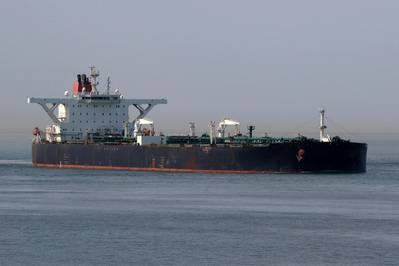US Refiners Grab HSFO on Back of IMO 2020
U.S. refiners are scooping up cheap high-sulfur fuel oil for processing from Russia and the Baltic states as they take advantage of new shipping rules that have cut demand for the dirtier marine fuel, according to oil traders and shipping data.
U.S. refiners Valero Corp, Chevron Corp and Phillips 66 have been buying HSFO, traders said, taking advantage of their complex operations to turn HSFO blended with crude oils into products like diesel, gasoil and gasoline.
This month, 2.2 million tonnes of fuel oil, largely from Russia and the Baltic states, will arrive in the United States, highest in at least three years, according to oil analytics firm Vortexa Ltd. Two-thirds of the total is Russian in origin, its data shows.
New maritime rules known as IMO 2020 mandate that the shipping industry has to burn cleaner, low sulfur fuels in tankers. The rules, which took effect Jan. 1, have clipped demand for marine fuels such as high-sulfur fuel oil. The surplus marine fuel is becoming a salve for refiners, according to traders, who have seen margins drop sharply due to weak global demand for refined products like diesel and gasoline.
Valero did not reply to requests for comment. Chevron and Phillips 66 declined to comment.
HSFO sold for $39.55 per barrel on the U.S. Gulf Coast on Wednesday, down 30% from a year ago, according to price tracker S&P Global Platts. January U.S. imports are expected to be 54% greater than December's, according to Vortexa.
"Fuel oil (is) going directly from Russia to the U.S., instead of Europe," said Lars van Wageningen, operations manager at Dutch consultancy Insights Global, which tracks fuel oil stocks in the Antwerp-Rotterdam-Amsterdam region.
Refiners are buying HSFO to replace the loss of crudes from Venezuela and Iran that have been barred by U.S. sanctions, and traders said they see an opportunity for big margins on products refined using HSFO, even though such a blend yields fewer barrels than processing crude oil into products.
HSFO is also is trading below Mexico's Maya and Canadian heavy crudes. HSFO traded about $23 per barrel below Brent crude, compared to an estimated $10 discount to Brent for Maya and Canadian crude, said analysts at Tudor Pickering Holt & Co.
"The yields aren't quite as good, but right now, with Maya crude at a $10 discount to Brent, (refiners) are getting a $13 head start," said Matthew Blair, a Tudor Pickering refining analyst. The yield, or percent of oil that can be converted to diesel or gasoline, affects a refiner's profit.
Valero was one of the most active purchasers of HSFO in the U.S. Gulf Coast, according to three trade sources. It has used the fuel at refineries in Louisiana and Texas, one of the traders said.
The tanker Tarbet Spirit was scheduled on Friday to discharge a cargo of about 500,000 barrels of fuel oil loaded in Antwerp at Pascagoula, Mississippi, according to Refinitiv Eikon data, where Chevron has a refinery.
(Reporting by Julia Payne and Collin Eaton; Editing by Tom Brown)














